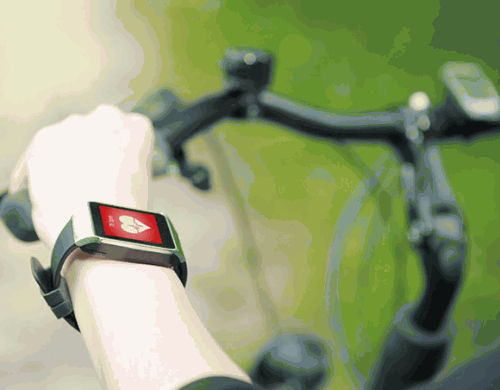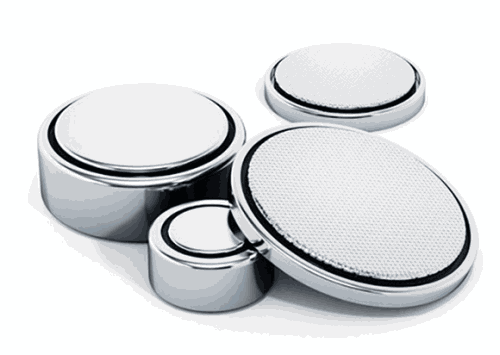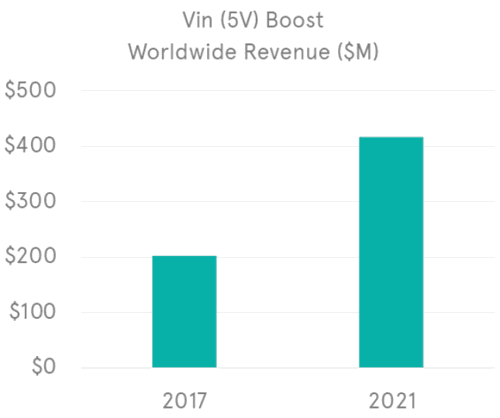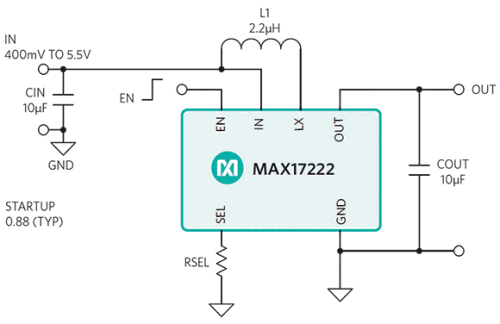
What makes all the talk and trends for wearables and the Internet of Things (IoT) possible? Medical patches that measure body temperature, deliver insulin and monitor heart rate must run long and reliably. In addition, these devices typically sit in storerooms and medicine cabinets for a long period of time before any patient use. Doctors and users need certainty that their device’s batteries will be alive and well at the time of use.
Similarly, smartwatches, earbuds, and video game controllers must run for a long time between charges (Figure 1). Who wants to keep charging or changing the batteries, or have the device stop working when it’s still needed? Imagine having to stop for a charge during a lengthy triathlon-style event.
Furthermore, devices like electricity meters, gas detectors and building automation systems, as well as flocks of field sensors, must have reliable uptime in the field, where they’re expected to perform continuously in the background and cannot be charged or maintained on a frequent basis.
From healthcare and biosensing to wearables and environmental sensing, nearly all IoT devices rely on batteries that must perform reliably and over an extended period of time in a variety of conditions. Indeed, battery life has reached a critical juncture.
According to Global Industry Analysts, the global market for portable battery-powered products is anticipated to reach $865,4 billion by 2020, “driven by the growing need for ubiquitous mobility in the current emerging wireless age of networking”.
Every IoT node needs a battery to run. A typical household of two people could have anywhere from 30 to 60 batteries in use. Each device, of course, will have its own unique energy use patterns. Let’s examine how battery life is calculated and discuss why quiescent current is important.

What factors into battery life?
Following manufacturing, many IoT node devices remain in shutdown mode, usually on shelves, until they are purchased and turned on for use. For most of their lifetimes, these devices are on standby mode, waking periodically to perform some action or transmit data to the cloud. This scenario is particularly true for products such as wearable fitness monitoring devices that users wear for relatively short time spans while they are exercising. Given this, there’s a need to uncover ways to improve power savings when devices are in passive mode.
System designers calculate battery life based on active, sleep and hibernate currents of the central controlling unit, which can be a microcontroller. Associated sensors and radios will also function in unison with the microcontroller. The power supply is, of course, also essential, providing energy to all of the functional blocks in a system.
While active current consumption is an important factor in extending battery life, runtime is ultimately influenced by the amount of time spent in each power mode. The standby current of each component becomes critical as sleep and hibernate functions take larger portions of time.
In such situations, the power supply’s quiescent current is the biggest contributor to a system’s standby power consumption. For example, consider a system powered by a 40 mAh, 1,55 V silver-oxide coin-cell battery (such as those shown in Figure 2) with a shelf life of one year. Assuming that the current drawn is about 4 µA, reducing the current by a single microamp could increase the wearable shelf life by about three months.
Power supplies typically consist of regulators, such as switching regulators that boost up or buck down the voltage or low-dropout (LDO) regulators. Some also have power management ICs (PMICs) that involve multiple power architectures and perhaps even a battery charger.

Don’t underestimate the impact of quiescent current
When a power supply is in standby mode, power consumption is defined by quiescent current (IQ), which refers to a circuit’s quiet state, when it isn’t driving any load and its inputs aren’t cycling. Quiescent current, while nominal, can also substantially impact a system’s power transfer efficiency during light load operation.
Sometimes, quiescent current gets mixed up with shutdown current. With quiescent current, the system is idle but ready to wake at any time to take some action, which is generally how users like their devices. Shutdown current, on the other hand, refers to a device that’s asleep. Designers use quiescent current to assess power dissipation of a power supply at light loads. And they use shutdown current to calculate battery lifetime when the device is powered off but its battery is connected to the regulator.
To extend battery life in a device, always design with components such as low-power microcontrollers, sensors, radios and efficient power supplies. Design techniques such as advanced-node CMOS fabrication processes also help lower a product’s overall power consumption, which could, in turn, positively impact battery life. Some designers will opt for a boost converter to extend battery life when the battery voltage drops to low levels. However, unless the right converter is selected, this approach can actually result in higher quiescent current, which drains the battery faster.
Form factor of the end product is another important consideration. Consumers – and therefore, designers – are driven to go smaller and lighter. The challenge is, a device’s battery is typically the largest and heaviest component on a device’s board.
A smaller battery would, of course, mean less capacity – which is contradictory to the demand for longer battery life. So designers must balance capacity and size with efficient power management techniques. Increasing a system’s power efficiency presents one common way to increase battery life.
It makes sense to pay close attention to the quiescent current specifications in power regulators such as boost converters – the lower this current, the more you can extend battery life. What is needed, particularly for today’s ultra-small designs, is technology that can deliver both lower quiescent current along with a form factor that is smaller than what is currently available on the market. In this case, even currents measuring in the milliamperes are not low enough to make an impact on battery life. Today’s wearable, mobile and IoT designs call for mere nanoamperes of current flow.

Choosing the right boost converter
Boost converters are DC-to-DC converters whose output voltage is greater than that of the source voltage. Looking at the boost converter market, VIN (5 V) boost power management circuits are the fastest growing segment, according to industry analysts (Figure 3 shows revenue projections for the global boost converter market).
Based on the requirements for the IoT applications that are driving this growth, designers are seeking boost converters offering lower voltage rails, longer battery life and smaller solution size. Choosing the right boost converters that will successfully extend battery life calls for close examination of some key criteria, including:
1. Quiescent current: the lower this current, the better the converter can preserve battery life in system standby mode.
2. True shutdown: by blocking the current output from the input in shutdown, this capability improves efficiency and extends shelf life for end products. If available as an integrated feature in the converter, it also eliminates expensive external components.
3. Input voltage range: allows running off of an almost ‘dead’ battery.
4. Efficiency: measured in VIN, VOUT, and IOUT, the higher the percentage, the better for increased battery life (>90% efficiency at µA level is ideal).
Examining the vendor’s track record in power management technologies is also important. Trusted vendors have long histories of delivering advanced technologies to customers of all sizes and in a variety of industries, continually enhancing their expertise and their products over time.
Some also provide customers with online simulation tools for evaluating efficiency curves and bills of material (BOM) costs based on their design specifications. Access to evaluation kits and boards provides a quick way to prototype designs of various sizes. In addition, the availability of ultra-small packages is essential for cost- and size-sensitive designs.

Ultra-low quiescent current boost converters with true shutdown
Maxim now offers boost (step-up) DC-to-DC converters with ultra-low quiescent current (300 nA) and True Shutdown technology, ideal for battery-powered applications that require long battery life. The MAX17222 nanoPower boost regulator features a 225 mA/0,5 A/1 A peak inductor current limit (Figure 4).
With True Shutdown technology, the output is disconnected from the input without forward or reverse current. Output voltage can be selected using a single standard 1% resistor. The MAX17222 features post-startup enable transient protection (ETP), which allows the output to remain regulated for input voltages down to 400 mV, depending on the load current. The boost converter is available in 0,88 x 1,4 mm2 6-bump WLP and 6-pin uDFN packages and features 95% peak efficiency to minimise heat dissipation.
Summary
When looking at ways to extend battery life in your next design, don’t underestimate the impact of quiescent current. Upfront, it’s important to understand the power profile of your end product – this will give you targets to aim for. When it’s time to consider the components that go inside, look for circuits that offer quiescent current at the lowest end of the nanoampere spectrum as possible.
The combination of low quiescent current, along with specifications like true shutdown, low input voltage range and high efficiency at the µA level, will help you deliver smart, connected products that meet customers’ demands for high uptime per charge.

© Technews Publishing (Pty) Ltd | All Rights Reserved